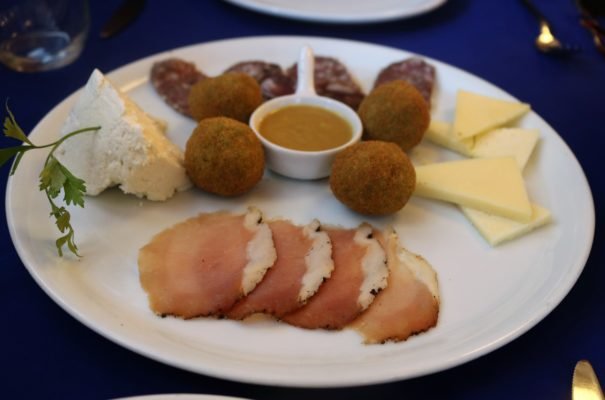
Five Different Breeds of Goat and a Peacock Just For Good Luck

Five Different Breeds of Goat and a Peacock Just For Good Luck
Breakfast in Havana
There are many different reasons one would want to travel to Cuba. Food generally comes on the lower end—if at all—of a long list that usually includes rum, cigars, classic cars, and architecture.
But some people are trying to change that. I’m visiting Vista Hermosa, in Havana’s Guanabacoa municipality. Misael Ponce runs the show at this finca, one member of a 68-farm collective, following in the footsteps of his great-grandfather, who started the operation.
They have, well, just about everything here. There are five different breeds of goat, there are chickens and rabbits, turkeys and pigs, guard dogs keeping watch and ranging farm dogs hanging out, and peacocks, just for good luck. There’s a tropical fruit cornucopia, with banana, guava, mango, tamarind, cherry, avocado, and soursop. There’s sugar cane and sweet potato, and there’s the mamancillo, a fruit I’ve never heard of, which you eat by first biting off its hard shell and then proceeding to suck out the gooey, tangy-sweet fruit hidden within, spitting out the remaining seed.
I’m strolling through Ponce’s farm, trying a bite of this fruit or that one, but I’m starting to struggle. I’m roasting in the brutal, humid heat of a Havana summer morning. I haven’t had any caffeine yet. Somewhere along the line, I’ve stepped in cow (goat? horse?) shit. And the small bites of sumptuous, sticky fruits are simply reminding me that I haven’t eaten anything else.
But a late breakfast bounty awaits. The farm produces a range of cheeses and cured meats—startlingly styled in Italian and Mediterranean fashion—including their riffs on pancetta, lomo, and salami, along with mozzarella, ricotta, and pecorino. If you’re lucky, you might be able to try a bite at the farm; otherwise, you can sample their fare at several high-end paladares back in central Havana, such as Mediterraneo Havana.
I arrive at the restaurant, wide-eyed in expectations of the meal that awaits. If I close my eyes and take a bite, I don’t think I’m actually in Florence or Rome or Sicily. But I sure as hell feel a world away from the touristy Cuba many people see.
The more visitors a finca such as Vista Hermosa attracts, the more they’re able to invest into their burgeoning food production capabilities, and the more interest they should, in turn, generate. And locals are slowly starting to take note. “Food is the most expensive thing in Cuba,” my guide, Javier, explains to me. “But it should be cheaper… the cheapest! People didn’t know about [a place like this], so they didn’t care. Now some do.”